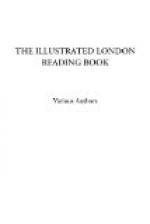The second source of cheerfulness to a good mind is its consideration of that Being on whom we have our dependence, and in whom, though we behold Him as yet but in the first faint discoveries of his perfections, we see every thing that we can imagine as great, glorious, and amiable. We find ourselves every where upheld by his goodness and surrounded with an immensity of love and mercy. In short, we depend upon a Being whose power qualifies Him to make us happy by an infinity of means, whose goodness and truth engage Him to make those happy who desire it of Him, and whose unchangeableness will secure us in this happiness to all eternity.
Such considerations, which every one should perpetually cherish in his thoughts, will banish from us all that secret heaviness of heart which unthinking men are subject to when they lie under no real affliction, all that anguish which we may feel from any evil that actually oppresses us, to which I may likewise add those little cracklings of mirth and folly, that are apter to betray virtue than support it; and establish in us such an even and cheerful temper, as makes us pleasing to ourselves, to those with whom we converse, and to Him whom we are made to please.
ADDISON.
* * * * *
STONY CROSS.
[Illustration: Letter T.]
This is the place where King William Rufus was accidentally shot by Sir Walter Tyrrel. There has been much controversy on the details of this catastrophe; but the following conclusions, given in the “Pictorial History of England,” appear to be just:—“That the King was shot by an arrow in the New Forest; that his body was abandoned and then hastily interred, are facts perfectly well authenticated; but some doubts may be entertained as to the precise circumstances attending his death, notwithstanding their being minutely related by writers who were living at the time, or who flourished in the course of the following century. Sir Walter Tyrrel afterwards swore, in France, that he did not shoot the arrow; but he was, probably, anxious to relieve himself from the odium of killing a King, even by accident. It is quite possible, indeed, that the event did not arise from chance, and that Tyrrel had no part in it. The remorseless ambition of Henry might have had recourse to murder, or the avenging shaft might have been sped by the desperate hand of some Englishman, tempted by a favourable opportunity and the traditions of the place. But the most charitable construction is, that the party were intoxicated with the wine they had drunk at Malwood-Keep, and that, in the confusion consequent on drunkenness, the King was hit by a random arrow.”
In that part of the Forest near Stony Cross, at a short distance from Castle Malwood, formerly stood an oak, which tradition affirmed was the tree against which the arrow glanced that caused the death of Rufus. Charles II. directed the tree to be encircled by a paling: it has disappeared; but the spot whereon the tree grew is marked by a triangular stone, about five feet high, erected by Lord Delaware, upwards of a century ago. The stone has since been faced with an iron casting of the following inscription upon the three sides:—




